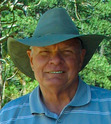Evan E. Filby's Blog: South Fork and More, page 101
June 20, 2014
Boise River Water Flows into the New York Canal [otd 06/20]
On June 20, 1900, a rude diversion structure turned water from the Boise River into the New York Canal. The diversion, though feeble, culminated nearly twenty years of effort to bring irrigation water to the higher benches paralleling the river.
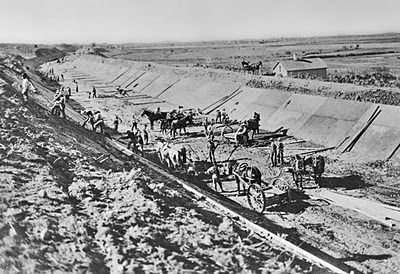 New York Canal construction. Boise State University.Individuals and small cooperative groups began diverting irrigation water from the Boise River less than a year after the 1862 gold discoveries in the Boise Basin. With limited resources, ditch develo...
New York Canal construction. Boise State University.Individuals and small cooperative groups began diverting irrigation water from the Boise River less than a year after the 1862 gold discoveries in the Boise Basin. With limited resources, ditch develo...
 New York Canal construction. Boise State University.Individuals and small cooperative groups began diverting irrigation water from the Boise River less than a year after the 1862 gold discoveries in the Boise Basin. With limited resources, ditch develo...
New York Canal construction. Boise State University.Individuals and small cooperative groups began diverting irrigation water from the Boise River less than a year after the 1862 gold discoveries in the Boise Basin. With limited resources, ditch develo...
Published on June 20, 2014 00:05
June 16, 2014
Northern Gold Activities Mixed, Many Headed for Boise Basin [otd 06/16]
A correspondent who signed himself as “Mudsill” wrote a letter from Lewiston on June 16, 1863, that was published in The Oregonian a week later. He said, “I arrived at this place yesterday evening. The town is dull, awful dull. Everybody has gone to Boise, and everybody else getting ready to go.”
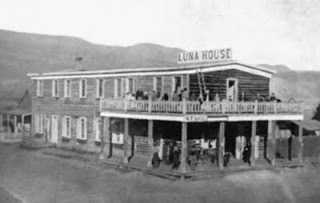 Luna House Hotel, Lewiston. [Illust-North]
Luna House Hotel, Lewiston. [Illust-North]
This refrain had, of course, been operable for a good many weeks. All the northern gold towns had lost people, sometimes nine out of ten from their peaks. Mud...
 Luna House Hotel, Lewiston. [Illust-North]
Luna House Hotel, Lewiston. [Illust-North]This refrain had, of course, been operable for a good many weeks. All the northern gold towns had lost people, sometimes nine out of ten from their peaks. Mud...
Published on June 16, 2014 00:30
June 13, 2014
Burke, Idaho, Ready for Almost a Century of Silver Production [otd 06/13]
On June 13, 1885, a group of prospectors met and “declared” the town of Burke. They picked a spot about six miles up Canyon Creek from Placer Center (soon to be Wallace), itself only a few months old. The gorge is so narrow at Burke that during the winter the bottom gets only two or three hours of direct sun.
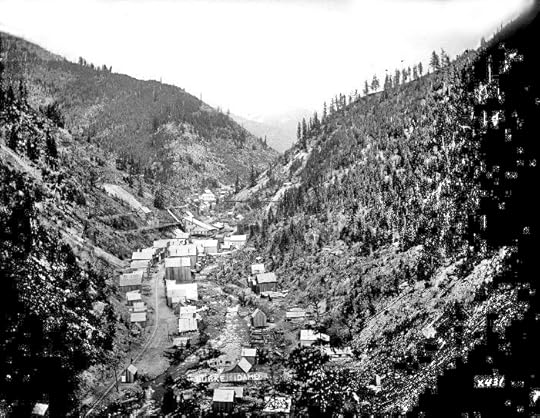 Burke, ca 1888. University of Idaho Library.
Burke, ca 1888. University of Idaho Library.
The previous year, searchers had uncovered two fabulous silver lodes, the “Tiger” and the “Poorman.” Other prospects soon followed. However, on...
 Burke, ca 1888. University of Idaho Library.
Burke, ca 1888. University of Idaho Library.The previous year, searchers had uncovered two fabulous silver lodes, the “Tiger” and the “Poorman.” Other prospects soon followed. However, on...
Published on June 13, 2014 00:00
June 10, 2014
“Good Roads” Groups Demand More Paved Highways, Better Bridges [otd 06/10]
On Tuesday, June 10, 1913, the Fourth Annual Convention of the Intermountain Good Roads Association opened in Boise. Convention sessions ran through Thursday evening, with such topics as "Good Enough Roads for the Traffic." Thursday morning, former Idaho Governor James H. Hawley spoke on "Good Roads and Their Relation to Mining."
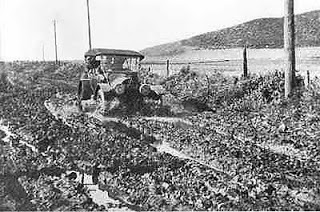 Mud is the enemy. National Archives
Mud is the enemy. National Archives
On Friday, the convention offered a tour to the Arrowrock Dam site. The dam was then about two years from completion. At this fourt...
 Mud is the enemy. National Archives
Mud is the enemy. National ArchivesOn Friday, the convention offered a tour to the Arrowrock Dam site. The dam was then about two years from completion. At this fourt...
Published on June 10, 2014 00:06
June 6, 2014
Weiser Stockman and Irrigation Developer Thomas Galloway [otd 06/06]
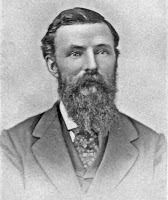 Tom Galloway. Illustrated History.Weiser pioneer Thomas C. Galloway was born June 6, 1837 in Iowa County, Wisconsin. He was a teenager when the family emigrated along the Oregon Trail to Yamhill County, Oregon in 1852. Tom pursued a variety of jobs, including some time as a teacher, before leading pack trains to the British Canadian gold camps.
Tom Galloway. Illustrated History.Weiser pioneer Thomas C. Galloway was born June 6, 1837 in Iowa County, Wisconsin. He was a teenager when the family emigrated along the Oregon Trail to Yamhill County, Oregon in 1852. Tom pursued a variety of jobs, including some time as a teacher, before leading pack trains to the British Canadian gold camps. In 1863, Galloway packed supplies into the Boise Basin, then stayed to work in the gold fields. The following year, he and Woodson Jeffreys settled al...
Published on June 06, 2014 00:04
June 1, 2014
Indian Agent Discourses on “The Snake Indians” [otd 01/06]
On June 1, 1863, J. W. Perit Huntington, Superintendent of Indian Affairs for Oregon, addressed a report to his Washington, D. C. boss, the Commissioner of Indian Affairs. The essay summarized what he had learned about the Indian tribes commonly known as the “Snakes.”
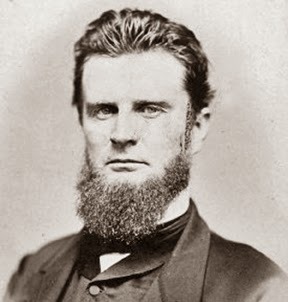 J. W. Perit Huntington.
J. W. Perit Huntington.
Image courtesy of
the Oregon State Library.
He wrote, “The word Snake appears to be a general term applied to several bands or tribes of Indians quite distinct in language and characteristic, and inhabiting d...
 J. W. Perit Huntington.
J. W. Perit Huntington.Image courtesy of
the Oregon State Library.
He wrote, “The word Snake appears to be a general term applied to several bands or tribes of Indians quite distinct in language and characteristic, and inhabiting d...
Published on June 01, 2014 00:05
May 21, 2014
Richard Z. Johnson: Developer, Legislator, and Territorial Attorney General [otd 05/21]
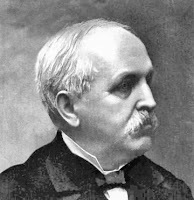 R. Z. Johnson. Illustrated History.Richard Z. Johnson, who served in the Idaho Territorial Council and as Attorney General, was born May 21, 1837 in Akron, Ohio. Johnson had ancestors on both sides who fought in the American Revolution. The family had moved from Vermont to Akron three or four years before Richard was born.
R. Z. Johnson. Illustrated History.Richard Z. Johnson, who served in the Idaho Territorial Council and as Attorney General, was born May 21, 1837 in Akron, Ohio. Johnson had ancestors on both sides who fought in the American Revolution. The family had moved from Vermont to Akron three or four years before Richard was born.He received a law degree from Yale in 1859, then practiced for five years in Minnesota. While there, he served two terms as City Attorney in Winona, about 25 miles northwest...
Published on May 21, 2014 00:07
May 18, 2014
Prospectors Discover Gold in the Owyhee Mountains [otd 05/18]
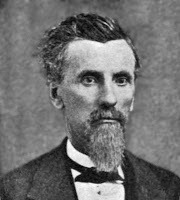 O.H. Purdy. Commercial Directory.On the morning of May 18, 1863, a band of twenty-nine men broke camp and marched south and west from Reynolds Creek over a regional divide.
O.H. Purdy. Commercial Directory.On the morning of May 18, 1863, a band of twenty-nine men broke camp and marched south and west from Reynolds Creek over a regional divide.Early that month, the group had set out from Placerville, in the Boise Basin. They were chasing rumors that Oregon Trail emigrants in the Forties had observed gold signs in southwest Idaho. After crossing the Snake River, they followed along it to the mouth of Reynolds Creek (which they named) and turned into the mountains....
Published on May 18, 2014 00:06
May 13, 2014
Movie and Television Costume Designer Eddie Stevenson [otd 05/13]
 Susan Hayward costume,
Susan Hayward costume,David and Bathsheba, 1951.
Edward Stevenson Collection, ISU.Long-time Hollywood costume designer Edward Manson Stevenson was born May 13, 1906 in Pocatello, Idaho. Stevenson spent over thirty years designing movie costumes before switching over to television in 1955. Along the way, he created wardrobes for a host of Hollywood’s biggest stars: Susan Hayward, Maureen O'Hara, Shirley Temple, Ginger Rogers, Edward G. Robinson, and many others.
Eddie credited an aunt who ran a...
Published on May 13, 2014 00:04
May 10, 2014
Message Transmitted: Transcontinental Railroad Completed [otd 05/10]
On Monday, May 10, 1869, telegraph operators clattered a message all around the United States, East and West: “D-O-N-E”. That signaled the completion of the transcontinental railroad. The story of the vast national changes the rail line caused has been told and retold, in grand scale.
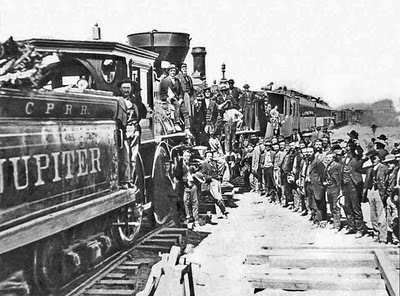 Meeting of the railroads, 1869. National Park Service.But perhaps no other region, not directly on the new tracks, felt that impact as much as Idaho, although western Idaho didn’t hear about the event until days...
Meeting of the railroads, 1869. National Park Service.But perhaps no other region, not directly on the new tracks, felt that impact as much as Idaho, although western Idaho didn’t hear about the event until days...
 Meeting of the railroads, 1869. National Park Service.But perhaps no other region, not directly on the new tracks, felt that impact as much as Idaho, although western Idaho didn’t hear about the event until days...
Meeting of the railroads, 1869. National Park Service.But perhaps no other region, not directly on the new tracks, felt that impact as much as Idaho, although western Idaho didn’t hear about the event until days...
Published on May 10, 2014 00:09
South Fork and More
As an author's vehicle, this blog will include my thoughts on the writing process, supplemental information about my books, and "status"updates on current projects.
My long-time blog -- the South Fork As an author's vehicle, this blog will include my thoughts on the writing process, supplemental information about my books, and "status"updates on current projects.
My long-time blog -- the South Fork Companion -- leans heavily toward Idaho history. In particular, I post an "On This Day" (OTD) item with an Idaho "spin" for every day of the year. I originally tried to have the system bring over the entire item, but the transfer does not handle the photo captions well. That's not good, because I generally include two images with each of my OTD posts. ...more
My long-time blog -- the South Fork As an author's vehicle, this blog will include my thoughts on the writing process, supplemental information about my books, and "status"updates on current projects.
My long-time blog -- the South Fork Companion -- leans heavily toward Idaho history. In particular, I post an "On This Day" (OTD) item with an Idaho "spin" for every day of the year. I originally tried to have the system bring over the entire item, but the transfer does not handle the photo captions well. That's not good, because I generally include two images with each of my OTD posts. ...more
- Evan E. Filby's profile
- 2 followers


